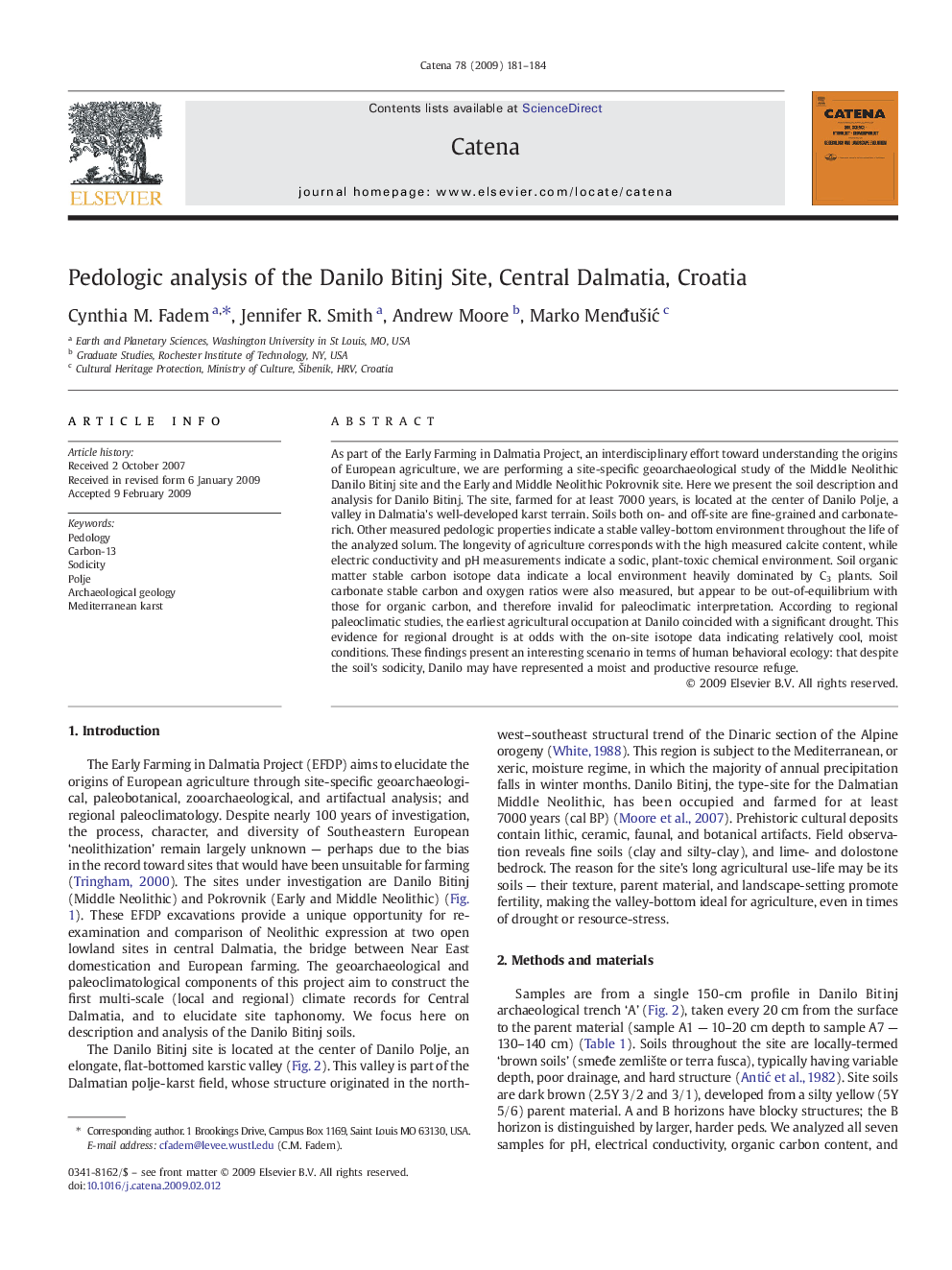| Article ID | Journal | Published Year | Pages | File Type |
|---|---|---|---|---|
| 4572185 | CATENA | 2009 | 4 Pages |
As part of the Early Farming in Dalmatia Project, an interdisciplinary effort toward understanding the origins of European agriculture, we are performing a site-specific geoarchaeological study of the Middle Neolithic Danilo Bitinj site and the Early and Middle Neolithic Pokrovnik site. Here we present the soil description and analysis for Danilo Bitinj. The site, farmed for at least 7000 years, is located at the center of Danilo Polje, a valley in Dalmatia's well-developed karst terrain. Soils both on- and off-site are fine-grained and carbonate-rich. Other measured pedologic properties indicate a stable valley-bottom environment throughout the life of the analyzed solum. The longevity of agriculture corresponds with the high measured calcite content, while electric conductivity and pH measurements indicate a sodic, plant-toxic chemical environment. Soil organic matter stable carbon isotope data indicate a local environment heavily dominated by C3 plants. Soil carbonate stable carbon and oxygen ratios were also measured, but appear to be out-of-equilibrium with those for organic carbon, and therefore invalid for paleoclimatic interpretation. According to regional paleoclimatic studies, the earliest agricultural occupation at Danilo coincided with a significant drought. This evidence for regional drought is at odds with the on-site isotope data indicating relatively cool, moist conditions. These findings present an interesting scenario in terms of human behavioral ecology: that despite the soil's sodicity, Danilo may have represented a moist and productive resource refuge.
